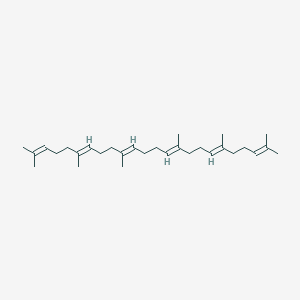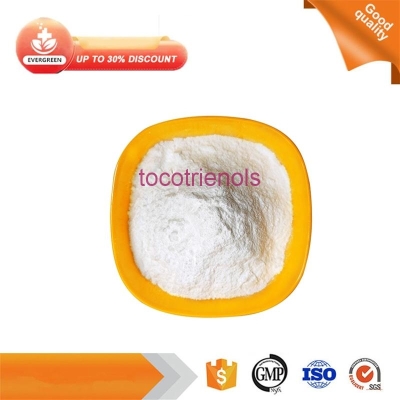-
Categories
-
Pharmaceutical Intermediates
-
Active Pharmaceutical Ingredients
-
Food Additives
- Industrial Coatings
- Agrochemicals
- Dyes and Pigments
- Surfactant
- Flavors and Fragrances
- Chemical Reagents
- Catalyst and Auxiliary
- Natural Products
- Inorganic Chemistry
-
Organic Chemistry
-
Biochemical Engineering
- Analytical Chemistry
- Cosmetic Ingredient
-
Pharmaceutical Intermediates
Promotion
ECHEMI Mall
Wholesale
Weekly Price
Exhibition
News
-
Trade Service
due to the lack of effective treatment drugs and methods for new coronavirus (SARS-CoV-2) infections, clinicians have long been able to use drugs known to be effective against other medical conditions to treat COVID-19. Chloroquine/hydroxychloroquine has become a hot topic in the case of Redsivir's poor treatment of COVID-19, which has been shown to have antiviral properties and immunomodulation under laboratory conditions and is often used to treat autoimmune diseases such as systemic lupus erythematosus and rheumatoid arthritis.However, the use of these drugs for COVID-19 treatment is based on a small number of anecdotal experiences, and the relevant small randomized trials are largely not legal, so there is an urgent need for rigorous study of large samples to understand their potential risks to provide accurate clinical guidance.Recently, researchers from Bregen and Women's Hospital of Harvard Medical School in the United States studied the therapeutic effects and potential risks of chloroquine or hydroxychloroquine in COVID-19 and found that the use of hydroxychloroquine or chloroquine, whether or not they were linked to large ring esters, had no significant benefit for the treatment of COVID-19, and that it reduced hospital survival in PATIENTs with COVID-19 and increased the frequency of arrhythroids in the room. The findings were published May 22 in the top medical journal THE LANCET.The researchers looked at the entire inpatient cycle of 96,032 patients (average age 53.8 years and 46.3 percent female) who tested positive for SARS-CoV-2 in 671 hospitals on six continents. According to the treatment of chloroquine alone, the use of chloroquine of large ring esters, the use of hydroxychloroquine alone or the use of hydroxychloroquine of large ring esters divided the patients into 4 treatment groups (a total of 14,888 patients), 81,144 patients who did not receive any of the above treatment as a control group.
using Cox Proportional Risk Regression Analysis statistics, patients who were older, obese, male, black or Hispanic, who smoked, had diabetes, hyperlipidemia, coronary artery disease, and had arrhythmic disorders had a higher risk of death. In women, Asians, the use of ACE inhibitors and statins was associated with a reduced risk of mortality. A history of coronary artery disease, congesitive heart failure, arrhythmic disorders, and chronic obstructive pulmonary disease increases the risk of new arrhythroid disorders during hospitalization.After controlling for a variety of other factors (age, sex, race, BMI, cardiovascular disease, diabetes, lung disease, smoking, etc.), the mortality rate in the hydroxychloroquine-only group was 18% compared to 9.3% in the control group, with a risk ratio of 1.335; The mortality rate was 23.8 per cent in the drug group with a risk ratio of 1.447, the mortality rate in the chloroquine-only group was 16.4 per cent and the risk ratio was 1.365, and the mortality rate in the chloroquine and esters group was 22.2 per cent and the risk ratio was 1.368. This suggests that taking hydroxychloroquine or chloroquine alone, or in combination with large-ring endoesters, can lead to an increased risk of death in patients with COVID-19.In addition, the researchers found that the risk of hydroxychloroquine was 6.1% compared to 0.3% of the new cystaclic arrhythlasm in the control group, and 2.369 in the hydroxychloroquine and large ring endoester groups. the risk ratio was 5.106, the risk ratio was 4.3 per cent for the chloroquine group alone, the risk ratio was 3.561, and the risk ratio for the chloroquine group with large cycloesters was 6.5 per cent and the risk ratio was 4.011. The results showed that the use of hydroxychloroquine or chloroquine was significantly and independently associated with an increased risk of neo-temphthroidal arrhythlasmic disorders during hospitalization, and that the use of large-ring endoesters increased the risk.The results of this large, multi-center, controlled study have undoubtedly extinguished hopes of using the drug to treat and prevent COVID-19, and have also dampened U.S. President Donald Trump's enthusiasm for the promotion of hydrochloroquine drugs. (Biological exploration)







